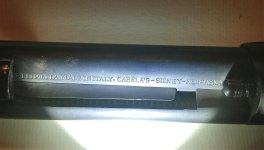I just picked up a Pietta 1873 SAA clone in .357. It's one of the older ones without the transfer bar (so it's really a 5-shooter).
It was the basic model with dull matte black finish, brass trigger guard and backstrap and very nice walnut grip. I have not had it to the range, but it works just fine with snap caps (see 'em in the picture below).
My only concern is the trigger. It's about 3/4 of a pound. Touch it gently and it goes BANG!
I did a bit of interwebs search and most everyone has nice things to say about the trigger. This one has zero takeup….just press - boom.
So I'm wondering two things: is a very light trigger normal for SAA-type revolvers and has anyone had any experience with this particular one.
We just came back from a cross-country drive, but sped through the east coast and Midwest to get to SD, Black Hills, Cody, Yellowstone and Montana. Bought me a nice cowboy belt buckle, cowpoke's hat and a western shirt. Figured I need a cowboy gun to complete the outfit. (Plus I've always wanted one and a model in .357 means I can shoot .38 sp and some nice light handloads. )
Any help is certainly appreciated.
It was the basic model with dull matte black finish, brass trigger guard and backstrap and very nice walnut grip. I have not had it to the range, but it works just fine with snap caps (see 'em in the picture below).
My only concern is the trigger. It's about 3/4 of a pound. Touch it gently and it goes BANG!
I did a bit of interwebs search and most everyone has nice things to say about the trigger. This one has zero takeup….just press - boom.
So I'm wondering two things: is a very light trigger normal for SAA-type revolvers and has anyone had any experience with this particular one.
We just came back from a cross-country drive, but sped through the east coast and Midwest to get to SD, Black Hills, Cody, Yellowstone and Montana. Bought me a nice cowboy belt buckle, cowpoke's hat and a western shirt. Figured I need a cowboy gun to complete the outfit. (Plus I've always wanted one and a model in .357 means I can shoot .38 sp and some nice light handloads. )
Any help is certainly appreciated.



